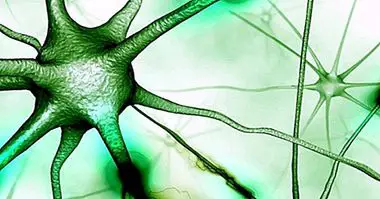How to deal with disturbing emotions with Mindfulness
One of the main components that are part of a large proportion of therapeutic processes becomes the management of emotions , especially those that destabilize us negatively or those that have an unpleasant connotation such as anger, worry (fear) or sadness.
A basic principle in the psychological work of emotions is the learning of both their identification, their handling and their expression in an adaptive way. Contradictory processes, that is, repression or avoidance, usually lead to the appearance of significant discomfort in the medium and long term. In this sense, and especially in the face of disturbing emotions, it is useful to resort to Mindfulness , or Full attention, to manage them.
- Related article: "What is Mindfulness? The 7 answers to your questions"
The identification of disturbing emotions
One of the main objectives in achieving stability and emotional well-being involves dealing with the feelings generated after the cognitive experience of a specific situation, processing them rationally and realistically and, finally, issuing a response of acceptance and adequate assimilation of said discomfort. As Simon (2011) argues, a fundamental process in achieving this objective is to "calm the mind and see clearly".
It seems necessary to train in "disidentifying" with the intense emotion experienced at a certain moment in order to to be able to analyze it with greater perspective and greater clarity .
One of the most recognized theories about how emotions are produced was the one proposed by James-Lange at the end of the 19th century, from which the hypothesis was established that the physiological changes produced in the organism are transmitted by the autonomic nervous system. towards the cerebral cortex and derived from it, emotions arise. Thus, these authors were opposed to the initial theoretical principle that argued that emotions are the cause of physiological change. For James-Lange the individual does not cry because he is sorry, but he is sorry because he cries.
Subsequently, the Cannon-Bard approach at the beginning of the 20th century succeeded a greater consensus regarding the physiological explanation of the emotions postulating that both the bodily reaction and the emotion occur simultaneously and are interdependent. In this way, the idea that a fundamental factor in the identification of emotions becomes the analysis in the physiological reaction that a person emits before a concrete experience began to be considered valid.
On the other hand, from the most current approaches on the construct emotional intelligence, it is understood that there is a bidirectional relationship between emotions and thoughts. That is to say, that both influence each other, for which, another indispensable element to observe consists of the type of cognitions that a person generates when he interprets a specific experience .
- Maybe you're interested: "The 8 types of emotions (classification and description)"
Coping with disturbing emotions
Simón (2011), expert in the area of Mindfulness techniques, has proposed a set of seven steps, whose components can be altered in order or appearance, which can serve as guide in coping with emotions that are difficult to manage either by its intensity or its depth:
1. Stop
Stop doing what you have in hand (an action, a conversation, etc.), interrupting the disturbing instinctive emotional reaction that has been derived from a specific event.
2. Breathe deeply
Performing 5 breaths from the diaphragm , respecting cycle 5-8 (5 seconds of inspiration and 8 seconds of expiration).
3. Become aware of emotion and body changes
Is about identify what emotions are occurring and the thoughts that accompany to emotion, as well as if they are accompanied by a behavioral intention (a behavioral response).
4. Accept the experience
From the active and conscious experience of emotion, a series of phases of aversion, curiosity, tolerance, permission and friendship to the emotion in question follow one another.
5. Self-pity
It consists of giving affection and affection to oneself, instead of issuing judgments of guilt or rage , for example, having felt this disturbing emotion.
6. Release
This step involves differentiating the emotion of the "I", the disidentification, to let go of that feeling.
- You may be interested: "What is" the Self "in Psychology?"
7. Decide to act or not to act
Do this according to the circumstances of the situation, valuing the benefits and drawbacks to issue a response at that time.
Acceptance or compliance?
Possibly, in relation to the guide presented above, one of the most complex phases corresponds to point four: the acceptance of the disturbing emotion. At this point it is necessary to make a fundamental distinction between this concept and that of conformity or resignation.
In the first place, one of the biggest discrepancies between both constructs is the absence of judgments, criticisms and evaluations of the experience of the emotion proper to acceptance. For this, the first step is get rid of so-called cognitive tags , the qualifying adjectives that mark the disturbing emotion with the purpose of eliminating the expectations or descriptive prejudices of that emotional experience.
It is, therefore, perform a mental processing type DOWN-UP of the said feeling, where the person focuses his concentration on experiencing the experience as if it were the first time, exploring the sensations and perceptions without classifying them, without evaluating them. In this way, the person changes his relationship with the experience of the emotion in question, ceasing to be a relationship with negative or unpleasant meaning. This, finally, facilitates the person to be able to detach himself from emotion without being trapped by it.
Another relevant point is the active nature of the acceptance, as opposed to the passive nature is attributed to resignation or compliance . In the first case, the person makes the conscious decision to experience emotions and thoughts with full attention, voluntarily and actively.
Finally, within the previous fourth point of Simon's guide, the following five moments occur from which the individual manages to make feasible the change of the relationship with his disturbing emotion:
- Aversion : the person does not want to feel that emotion because of its destabilizing and unpleasant nature and resists it.
- Curiosity : the person begins to focus his attention only on observing what he is feeling, without evaluating or judging him.
- Tolerance : the person increases their acceptance of emotion although certain resistances are still present.
- Permission : each time the resistances are lower since the emotion judgments are eliminated.
- Friendship : the person embraces the emotion since it accepts it as an experience that involves personal learning. At this point, the feeling of compassion towards oneself begins to be activated where the individual gives himself permission to feel that emotion in a kind way, without emitting self-criticism or guilt.
In conclusion
One of the most useful applications of Mindfulness or Mindfulness techniques keeps a close relationship with the competition in Emotional Intelligence , specifically in the process of identification, management and expression of emotions that can produce discomfort.
The guide offered above can be a useful strategy for modify how we relate to our emotions and we went from seeing them as something unpleasant to avoid or ignore in order to understand them as necessary and beneficial processes for one's psychological well-being. This type of practice can bring us closer to a greater acceptance of this type of emotions, greatly diminishing the negative connotation that we could a priori grant them.
Bibliographic references:
- Simón, V. and Germer, C. (col.) (2011). Learn to practice Mindfulness (10th edition.). Madrid: Stamp Editions.
- Lázaro, A. M. (2012) Learning to practice Mindfulness. Papers of the Psychologist, 2012. Vol. 33 (1), pp. 68-73. Complutense University of Madrid.



















